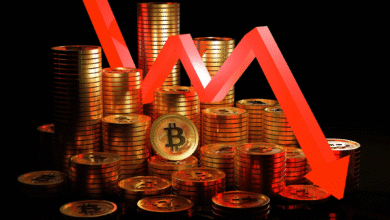Bitcoin Trading Volume Comprehensive Overview 2025

Bitcoin Trading Volume Since its launch in 2009, the pioneering cryptocurrency known as Bitcoin has experienced meteoric growth in its user base. An essential indicator for comprehending the dynamics of the cryptocurrency market, its trading volume has recently come under intense scrutiny because of its meteoric ascent. This article defines, quantifies, and discusses Bitcoin trade volume, its impact on investors, and the variables that affect it. In addition, we’ll answer some frequently asked questions about the number of Bitcoin trades.
Bitcoin Trading Volume: What Is It?
Volume is the total quantity of Bitcoin exchanged across exchanges in a certain period, usually 24 hours. The number of Bitcoin units bought and traded indicates market activity and liquidity. High trading volume implies market interest and engagement, which can improve pricing accuracy and reduce volatility. Low trading volume may indicate a lack of interest, resulting in less trustworthy price signals and more considerable price volatility.
Trading volume is vital for traders and investors since it measures price patterns. A price rise with significant trading volume is usually considered a strong upward trend, while a price shift with low volume may be transient or weak. Tracking Bitcoin trading volume can help cryptocurrency investors make wise judgments.
Trading Volume: What Makes It Crucial?
- Liquidity Assessment: Trading volume is a key indicator of market liquidity. A higher trading volume suggests that Bitcoin can be bought or sold more easily without significantly affecting its price. This is crucial for traders looking to enter or exit positions swiftly.
- Market Sentiment: Changes in trading volume can reflect market sentiment. For instance, a sudden increase in volume may indicate heightened interest in Bitcoin due to news events, regulatory changes, or market trends. Conversely, a decline in volume may suggest waning interest or uncertainty.
- Price Movements: Trading volume is closely tied to price movements. A price increase accompanied by high trading volume may signal a strong upward trend, while a price increase in low volume could indicate weakness. Traders often look for volume confirmation when making decisions.
- Volatility Indicator: High trading volumes can lead to increased volatility. When more traders actively buy and sell, price fluctuations can become more pronounced, presenting opportunities and risks.
Bitcoin Trading Volume: How?
The total amount of Bitcoin exchanged across all exchanges in a given timeframe, usually 24 hours, is called the trading volume of Bitcoin. This data is then pooled to provide a complete picture of trading activity. Essential components of the Bitcoin trade volume metric are as follows:

- Data Aggregation: Trading volume is collected from various cryptocurrency exchanges, such as Binance, Coinbase, Kraken, and Bitfinex. Each exchange has its volume metrics based on the transactions conducted on its platform.
- Spot vs. Derivatives Trading Volume: It is essential to differentiate between spot trading volume and derivatives trading volume. Spot trading involves buying and selling Bitcoin, while derivatives trading includes contracts that derive their value from Bitcoin without actual ownership of the underlying asset. Both metrics provide valuable insights but reflect different aspects of market activity.
- Volume Calculation: The total trading volume is calculated by multiplying the number of Bitcoins traded by their price coins sold at $50,000 each; the trading volume would be $500,000.
- Data Reporting: Various platforms and websites like CoinMarketCap and CoinGecko report Bitcoin trading volume and provide historical data. This information helps traders analyze trends and make informed decisions.
Factors Influencing Bitcoin Trading Volume
Several factors affect Bitcoin trading volume and market dynamics. First, market attitude matters; regulatory approvals and institutional adoption can boost trade. Negative news might cause panic selling and volume reduction. Price volatility also affects trading volume, attracting traders seeking profits. Institutional investors and hedge funds can also boost volume by making huge deals. Improved trading platforms and tools increase accessibility and trading activity. Finally, seasonal trends and events, such as market cycles and halving events, can affect trading volume by causing traders to change their methods.
Market Sentiment and News Events
Traders’ enthusiasm is a significant factor in money changing hands. Regulatory approval, technical progress, or institutional investments are all examples of positive news that might boost interest in Bitcoin and cause trading volumes to rise. Trading volumes can surge as investors abandon positions responding to negative news, such as security breaches or governmental crackdowns.
Price Movements
Trading volume tends to spike in response to significant price changes. Traders react by purchasing or selling Bitcoin when its price goes up or down sharply, which causes trading activity to spike. For example, trade volumes increased in November 2021, when Bitcoin hit a record high of about $69,000, as investors tried to cash in on the momentum.
Market Manipulation
Market manipulation can also affect trading volume. Traders can distort market activity through a practice known as “wash trading,” when they buy and sell the same item to make it seem like more people are trading. To maintain market integrity, regulatory agencies scrutinize these actions more rigorously.
Seasonality and Time of Day
Holidays, market cycles, and significant events are just a few factors that can cause Bitcoin trading volume to follow seasonal trends. Another factor that might affect trading volume is the time of day. Since trading sessions occur at various times in different time zones, certain hours are busier than others.
Introduction of New Products and Services
New Bitcoin ecosystem products and services are boosting innovation and user experience. Cryptocurrency exchanges constantly introduce algorithmic and margin trading alternatives to serve novice and seasoned traders. Decentralized finance (DeFi) platforms are adding yield farming, lending, and staking services to optimize crypto holdings. Bitcoin casinos and gaming platforms offer live dealer games and dedicated Bitcoin slots. Wallet providers are improving security and user interfaces to simplify digital asset management. These innovations make Bitcoin more robust and user-friendly, attracting more users and increasing mainstream adoption.
Exchange Impact on Trading Volume
Your Bitcoin exchange choice considerably impacts trade volume. Binance, Coinbase, and Kraken trade more due to their large user bases, liquidity, and trustworthiness. With multiple trading pairings and features, these platforms attract traders and enable more significant transactions. Limited trading volume on smaller or less renowned exchanges might lead to unreliable price information and more volatility. New exchanges or trading platforms can disturb market dynamics by increasing competition and trade volume or fragmenting liquidity among venues. The exchange environment significantly affects Bitcoin trading volume and market activity.

Exchange Selection
Choosing the proper cryptocurrency exchange is essential for safe Bitcoin trading. Consider two-factor authentication and cold storage to protect user payments from attacks. User reviews and reputation might reveal the exchange’s trustworthiness and customer service. Lower trading fees boost profitability, especially for regular traders. A wider range of trading pairings provides for more versatile trading tactics. Both beginners and experienced traders should find the user interface easy to use. Finally, be sure the exchange follows local laws to make transactions and withdrawals easy.
Arbitrage Opportunities
Bitcoin arbitrage opportunities develop when exchanges or markets have price differences. These disparities allow traders to benefit without risk by buying Bitcoin at a lower price on one exchange and selling it at a higher price on another. Prices change frequently, so traders must respond quickly to seize these possibilities. One must monitor price fluctuations across platforms for successful arbitrage and comprehend transaction costs, withdrawal limitations, and transfer delays. Arbitrage can be profitable, but market instability and trade delays are dangers.
Pairs Trading
Pairs trading is a market-neutral method that buys and sells two associated assets, such as Bitcoin and another cryptocurrency or a financial instrument. To profit from the asset price differential. Traders watch past price correlation pairings for deviations. The trader buys the inexpensive item and sells the inflated one, expecting the prices to converge. This technique reduces market risk by offsetting long and short bets. Successful pairs trading involves thorough analysis, monitoring, and knowledge of market dynamics.
Analyzing Bitcoin Trading Volume
Understanding market patterns and Bitcoin Trading Volume decisions requires analysis of Bitcoin trading volume. High trading volume suggests market interest and liquidity, making price changes more dependable and less manipulable. Traders use volume analysis and price charts to spot trends. For example, increased volume supports a price increase, which is bullish. Low volume may indicate disinterest or uncertainty, increasing volatility. Moving averages and volume oscillators can assist traders in predicting price fluctuations and market sentiment.
Volume Indicators
Several technical indicators incorporate trading volume to help traders assess market conditions. Some common volume indicators include:
- Volume Moving Average: This indicator calculates the average trading volume over a specific period, helping traders identify trends.
- On-Balance Volume (OBV): OBV measures buying and selling pressure by accumulating volume based on price movements. A rising OBV indicates buying pressure, while a declining OBV suggests pressure of sale.
- Accumulation/Distribution Line: This indicator assesses the relationship between price and volume to determine whether an asset is being accumulated or distributed.
Chart Patterns
Combining volume analysis with chart patterns is a common strategy for traders. For example, a breakout from a resistance level accompanied by a large trade volume may indicate a strong trend, whereas a low-volume breakout may indicate a weak trend.
Historical Data Analysis
Examining past trade volume statistics can help one better understand current and future price trends. By comparing volume levels from the past with current market conditions, traders might find patterns that could help them with their trading techniques.
In Summary
One important indicator of market liquidity, sentiment, and price changes is the volume of bitcoin trades. Understanding the variables affecting trading volume and evaluating it will enable investors and traders to make wise choices in the ever-changing cryptocurrency market. Monitoring trading volume will be crucial for anyone trying to navigate this fascinating and frequently unpredictable world of Bitcoin as it develops.




